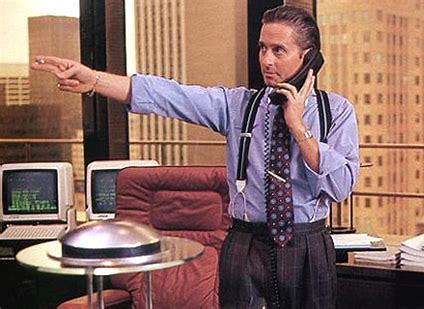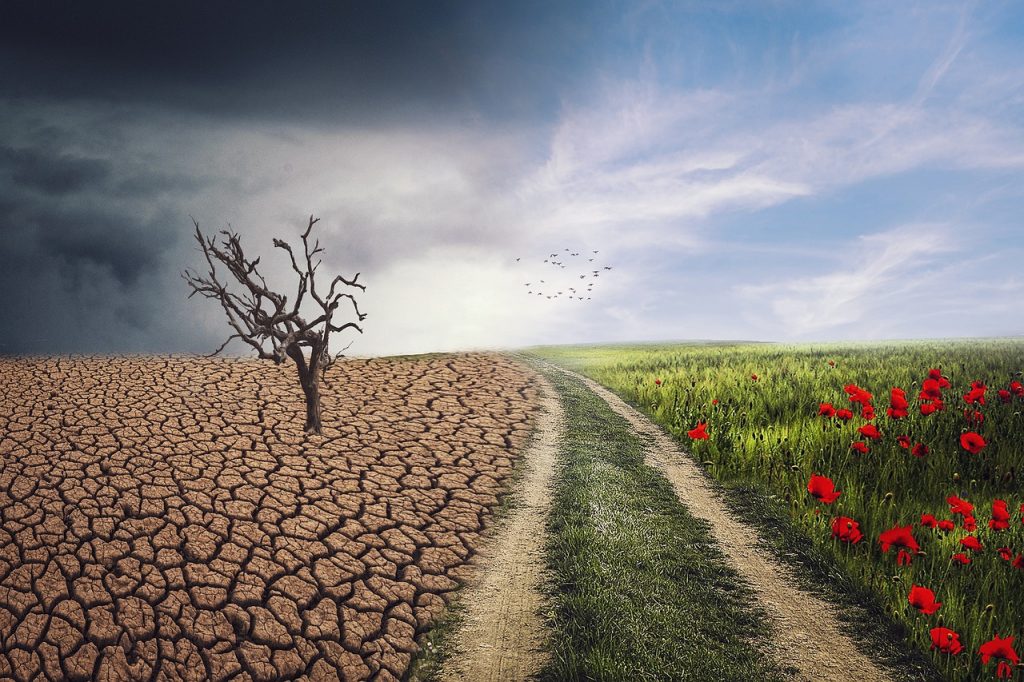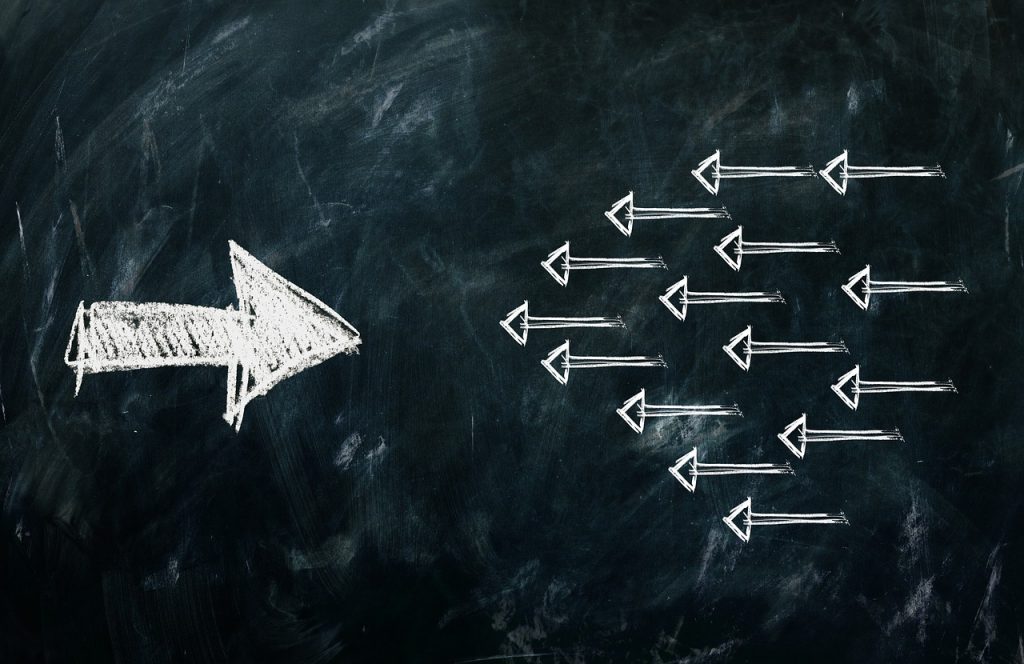
GUEST POST from Greg Satell
“Greed… is good,” declared Gordon Gekko, the legendary character from the 80s hit film Wall Street. “Greed is right. Greed works. Greed clarifies, cuts through and captures the essence of the evolutionary spirit. Greed, in all of its forms; greed for life, for money, for love, knowledge has marked the upward surge of mankind.”
The line resonated because it answered a question that people cared deeply about at the time, “how can we become more efficient?” In the face of heightened competition from Japan’s doctrine of total quality management, American firms appeared too sclerotic to compete. Corporate raiders preaching shareholder capitalism offered an easy answer.
The results are clear. Since then, the stock market has crashed a number of times, the last one resulting in a Great Recession. Productivity growth has been depressed for half a century. The incidence of extreme weather events and pandemics like coronavirus is on the rise. Clearly, we’ve been getting the wrong answers. It’s time we started asking different questions.
How Can We Become More Resilient?
We’ve grown accustomed to a reasonably stable world in which disasters were relatively rare. In the 19th century, wars, epidemics and financial panics were relatively common. The 1930s and 40s saw a global depression and a world war that claimed 75 million lives. By 1945, almost all of Europe and large parts of Asia lay in ruins.
Yet out of the ashes, we built a new, more resilient world. Institutions like the United Nations, World Bank and the International Monetary Fund created platforms to solve problems on a global scale. Bretton Woods established a global financial system and the Marshall Plan rebuilt Europe. An emerging welfare state permanently altered the role of the public sector in society.
That began to change in the Go-Go 80s when we shifted our focus from resilience to output maximization. As economists developed exciting new financial engineering techniques, business and governments increased their tolerance for risk and loaded up on debt. Staid chief executives gave way to corporate raiders and tech moguls.
The result is that we’ve become more vulnerable to shocks. In addition to worrying levels of financial debt, we also have considerable environmental debt and infrastructure debt, even as threats from terrorism, cyberattacks, extreme weather events and, of course, pandemics increase. We desperately need to figure out how to increase our resilience.
Clearly, a capitalism that focuses solely on financial capital and ignores other forms, such as social capital, human capital, natural capital, etc., is far too narrowly construed. We need to get better at integrating Environmental, Social and Corporate Governance (ESG) metrics into how we evaluate organizational performance.
What is the Relationship Between Cause and Effect?
Even a young child understands that if she touches a hot stove, her burn was caused by the stove and that it is no coincidence that both happened at the same time. We would expect her to run to her mother crying, “the stove burnt my hand!,” not “the pain in my hand coincided with touching the hot stove.”
Yet our algorithms and equations have no way of making basic distinctions between correlation and causality, which makes it difficult to design interventions. For example, if you find a strong correlation between temperature readings and ice cream sales, you might conclude that moving the thermometer close to a heater will improve ice cream sales.
Now I admit that sounds a bit silly, but similar mistakes happen all the time. For example, if a correlation is found between certain zip codes, crime rates and recidivism, we will tend to design our systems to punish people from poor neighborhoods more harshly. In fact, there is abundant evidence that mistakes such as these are common.
Debates about correlation and causation may seem academic, but they have real world impacts. If we could incorporate causation into our machine learning algorithms, we would greatly increase the speed and likelihood of finding a cure to Covid-19. At this point, there is a nascent effort to build intelligent systems based on causal principles, but there haven’t been any practical breakthroughs yet.
What is the Right Thing to Do?
In modern times, acting ethically has been seen as a relatively simple matter. You try to be kind to people and don’t lie, cheat or steal. In a moral classical sense, however, the study of ethics has been less about adhering to moral principles and more about trying to understand what the right thing to do is when there isn’t any cut-and-dried answer.
Most important decisions, like those that involve Covid-19 policy, have tradeoffs. It’s not hard to get people to agree that we should do everything possible to save as many lives as we can. Yet it is also true that we need to think about people’s ability to earn a living as well. So coming up with a strategy that saves lives and minimizes economic impact is far from easy, especially when easing restrictions too early could lead to even greater economic and human costs.
As our technology becomes more powerful, more difficult questions emerge. Can we teach an algorithm to understand right from wrong? Who is accountable for decisions machines make? To what extent should artificial intelligence systems be auditable? Or consider the emerging field of synthetic biology. Clearly, it’s giving us a leg up in fighting the coronavirus, but too what extent is it okay to alter the genetic code?
Part of the reason we were so unprepared for the Covid-19 pandemic is that most people were completely unaware of how dire the danger was. Clearly, we need a more public dialogue about the technologies we are building to achieve some kind of consensus of what the risks are and what we as a society are willing to accept. As we have seen, the consequences, financial and otherwise, can be catastrophic. We no longer have the luxury of acting cavalierly.
What Will It Take to Make Change Happen?
It should be obvious by now that things need to change. What’s not so obvious is how to bring change about. Theoretically, in a democracy you drive change forward by convincing a majority of your fellow citizens that it’s a good idea. However, research suggests otherwise. In fact, one study found that “when a majority—even a very large majority—of the public favors change, it is not likely to get what it wants.”
We see this play out in the real world as well. It has become common for those calling for change to organize a “March on Washington.” They make some noise for a while and then sputter out. In 2011, the Occupy Movement organized protests in over 950 cities across 62 countries, with little or nothing to show for it.
Yet it’s also misleading to suggest that shadowy special interests dictate what happens. While it is true that there are a number of rich and powerful forces, ranging from the Koch Brothers and George Soros to the NRA and Planned Parenthood, these forces are often in opposition to each other. They are better at blocking change than bringing it about.
As I explain in Cascades, change is not top-down or bottom-up but moves side-to-side. You need to mobilize people to influence institutions that have the power to affect change. Or, as Martin Luther King Jr’s biographer put it, “A social movement that only moves people is merely a revolt. A movement that changes both people and institutions is a revolution.”
We’re where we’re at today because people convinced institutions that maximizing output was more important than stability and resilience, that correlation was more important than causation and that technology was ethically neutral. We know now that none of these things are true. If we are to come up with better answers, we need to start asking different questions.
— Article courtesy of the Digital Tonto blog
— Image credit: Business Insider
![]() Sign up here to get Human-Centered Change & Innovation Weekly delivered to your inbox every week.
Sign up here to get Human-Centered Change & Innovation Weekly delivered to your inbox every week.
 Drum roll please…
Drum roll please…




